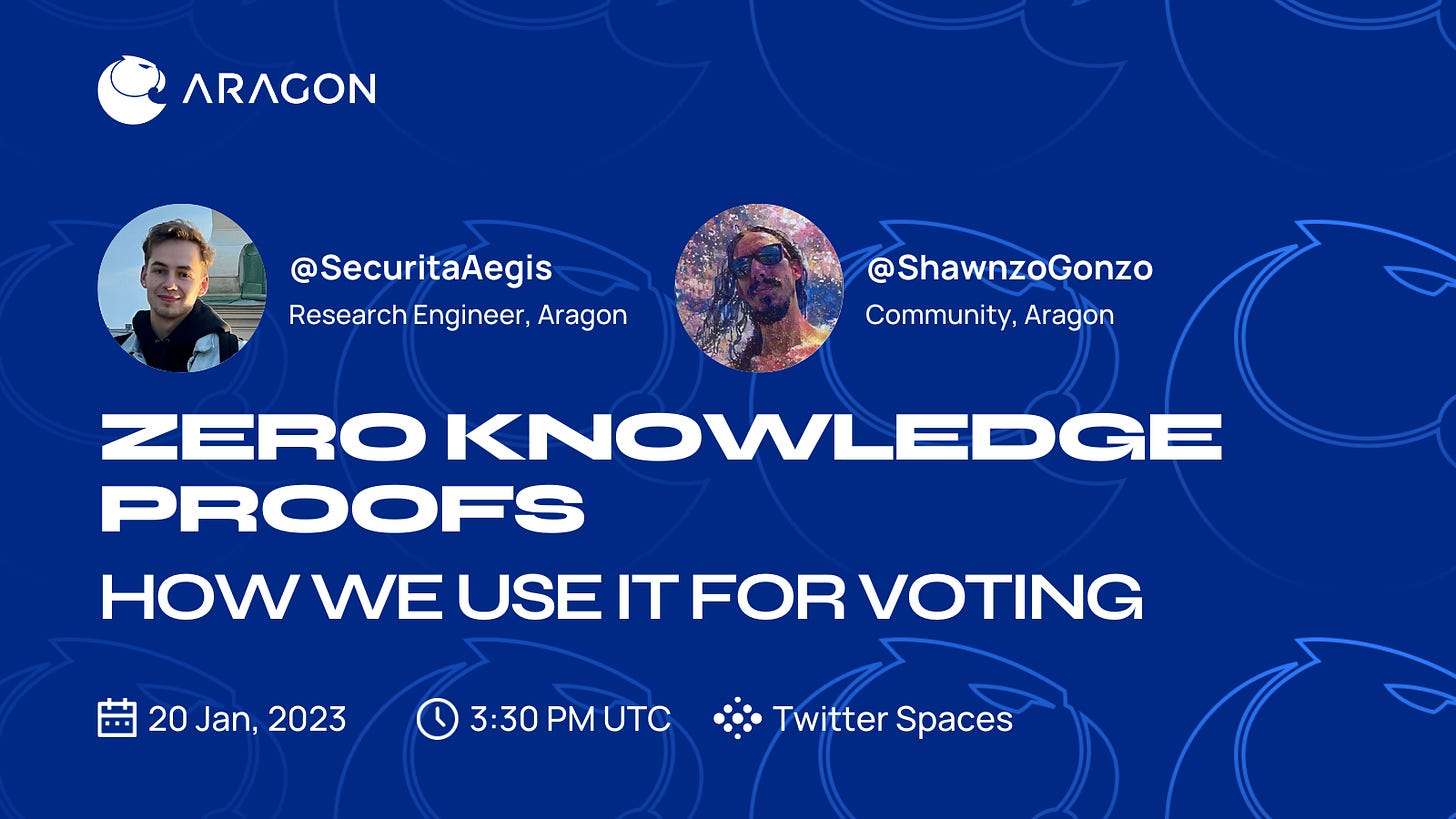The architecture of our DAO framework
Diving into what's behind our new OS, Rules vote for the Aragon DAO is live, IndieDAO feature week on Twitter
Top 3
We interviewed Carlos, VP of Engineering at Aragon, on a twitter space in December to deep-dive into the architecture of our new OS. We pulled out some key insights from his talk in the weekly highlight below!
Voting for the Rules of the new delegated voting DAO is live on Aragon Voice. Cast your vote here.
This week we featured IndieDAO on Twitter, our DAO Expert that provides design and development services for DAOs and web3 organizations. Learn more about IndieDAO in the network highlights below.
Highlight of the week: The architecture of our DAO framework
Core contracts were designed with simplicity in mind
Our DAO framework is made of two main parts: the core contracts and the plugin manager.
The core contracts are very simple. They make up the DAO Vault, which is where assets are stored.
“Simplicity is one the biggest features you can have in a smart contract,” said Carlos, VP of Engineering at Aragon. Simplicity can help make a contract more secure because there is less potential for bugs and exploitable logic.
The simplicity of the core contracts means there’s less immutable logic, so it’s easier for DAOs to adapt their organization.
“If you force logic into it, you have that logic forever,” said Carlos. “That’s why you need a very lean contract that holds your funds, and everything else is programmable based on your needs.”
Think of the architecture as a stack with the protocol on the bottom and plugins on the top.
Protocol: Base layer, contains very simple contracts that interact with the blockchain. The DAO Vault, or treasury, is on this layer.
Plugin manager: Manages the plugins by allowing the base layer to grant or revoke permission to the plugins.
Plugins: External contracts that can change the logic of the base layer, but be “unplugged” by revoking permission in the plugin manager.
Then, on top of the architecture are Apps, or UIs the end user interacts with.
“You start with something very simple and based on modularity, and you end up having a composable system that can grow with other systems as well,” said Carlos.
Plugins add logic to your DAO
The plugin manager is where you can start adding logic into your DAO. Plugins are connections to other contracts that integrate with DAOs built on Aragon. For example, a DAO might want to use NFT voting. In that case, they would grant permission to the NFT voting plugin via the plugin manager.
“Once you have the vault that holds the treasury, and the logic that is able to execute anything on governance plugins, you need to tie them together. That’s where the permission management comes in. You can set the permissions from different contracts to the vault.”
For example, a plugin could have logic like this: X contract can execute Y only if Z occurs. But how does the contract “know” that Z happened? You need an oracle.
An oracle is software that tells contracts on the blockchain things that the contract couldn’t “know” itself. For example, a contract couldn’t know if it’s Tuesday. If there’s a plugin that has logic stating it can only sends funds on Tuesday, the oracle tells the contract if it’s Tuesday or not.
“Permission management with oracles that check parameters, like guardians, allows programmable flows into your main contract,” said Carlos. “That’s one of the biggest features we have.”
The architecture is built to be modular and adaptable. With simple contracts at the center and logic on the outside, DAOs can adapt even while deployed on an immutable blockchain.
To start testing out the new OS, check out the new contracts on testnet.
Votes
Voting for the Rules of the new DAO is live on Aragon Voice.
The Rules are the plain English translation of the on-chain deployment. Read the full post here.
Proposals
Ecosystem and Growth Guild Funding Proposal for 2023
This funding proposal outlines the objectives, future plans, team, and funding request of the Ecosystem and Growth Guild for 2023.
Network Highlights
We launched a guide on how to distribute a DAO token:


We featured IndieDAO, a service DAO of independent developers and designers, this week. Read the thread below to learn more about their services. And, join the AMA at 3:30pm UTC today or listen to the recording:

Events
Zero Knowledge Proofs: How we use it for voting at Aragon. Friday, January 20 at 3:30pm UTC on Twitter Spaces.
RSVP here.
CTAs
Start experimenting with the new Aragon contracts on testnet.
Read the guide on how to distribute a DAO governance token.
RSVP for the ZK Proof twitter space on Friday the 20th to learn how we use ZK in voting at Aragon.
Learn about our DAO Expert IndieDAO.


